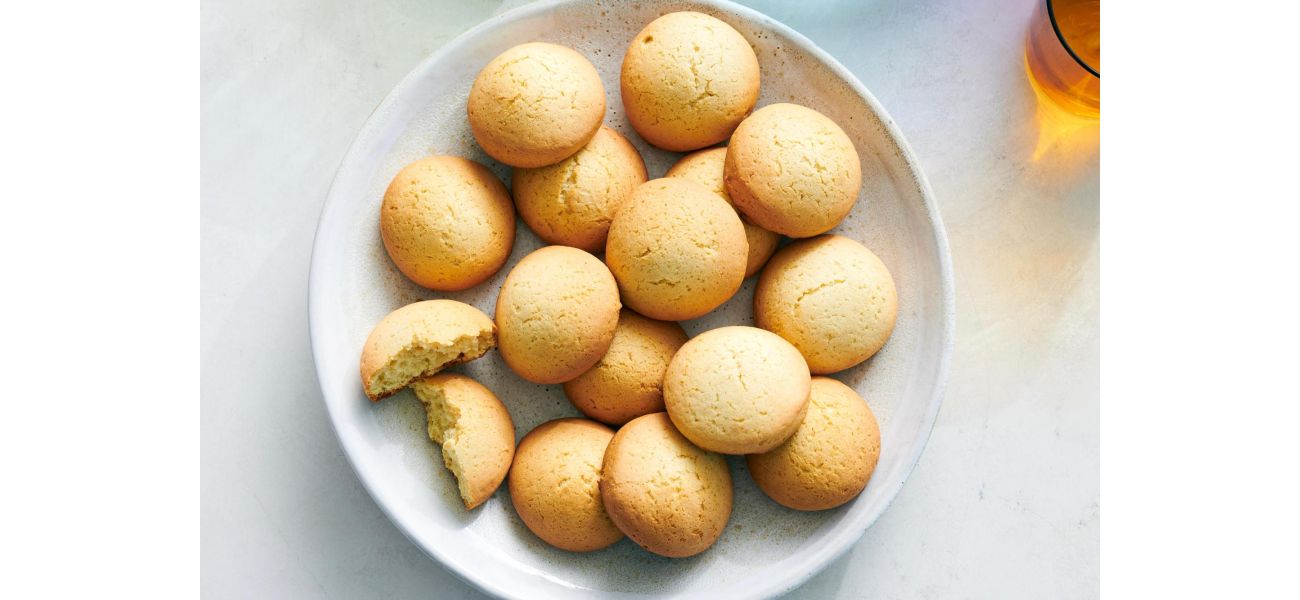Simple cakes don't require special ingredients to stand out.
Easy-to-make tea cakes, similar to British scones, were made by enslaved Africans on plantations using basic ingredients like eggs, baking powder, flour, and sugar.
September 15th 2024.

Tea cakes may not get the recognition they deserve, but their simplicity and history make them a beloved treat. They may not be as showy as other baked goods, but their flavor speaks for itself. A tea cake may not catch your eye at first glance, but once you take a bite, you'll understand why it's been perfected by generations of cooks. These humble cakes have a long and fascinating journey, traveling through miles and centuries and evolving with each stop.
It's difficult to pinpoint the exact origin of tea cakes, but it's widely agreed that enslaved people on plantations were responsible for the American version. This version was influenced by British tea cakes and jumble cookies, but was made without yeast and relied on baking soda or powder for lift. The addition of sweeteners like molasses or sugar and a rich fat like lard or butter gave these cakes a unique flavor. After being freed, African Americans brought the recipe with them to their new homes and continued to make them for their families. As they migrated north, tea cakes also made their way, becoming part of the culinary traditions of Black communities like Weeksville in Brooklyn.
The Weeksville Heritage Center, a place dedicated to preserving the neighborhood's history, includes historically recreated homes furnished with 19th and 20th-century wares. These homes give visitors a glimpse into the past and it's easy to imagine tea cakes baking in the small ovens, filling the air with their sweet aroma. A recipe for tea cakes can even be found in "The Brooklyn Cookbook," linking them to Weeksville and its thriving community of African Americans in the 1800s. This community provided a safe space for its residents to dream and express themselves, making it a hub for radical thought.
For Jocelyn Delk Adams, the founder of Grandbaby Cakes, tea cakes bring back fond memories of her grandmother's house in Mississippi. Her grandmother would make them whenever someone came to visit, and she would even add food coloring or spices to the dough for a special touch. Jocelyn has continued this tradition in her own home with her 6-year-old daughter, passing on the creativity and love that goes into making tea cakes. Her recipe, inspired by her grandmother's, even uses raspberry powder for a pink hue.
Tea cakes are often described as falling somewhere between a cookie, cake, and scone in texture. They are simple in taste and easy to make, but their cultural significance and history make them truly special. The recipe typically starts with creaming sugar and butter, adding eggs, vanilla, and nutmeg, and then sifting in flour, salt, and baking powder. The dough is then rolled out and cut into rounds before being baked to a golden brown. The result is a slightly sweet and satisfying treat, perfect for enjoying with a warm cup of tea or coffee.
No matter the modifications made to the recipe, tea cakes remain a cherished part of many families' traditions. They are a testament to the hard work and ingenuity of those who came before us, and a delicious way to connect with our heritage. So next time you take a bite of a tea cake, remember the journey it has been on and the love that goes into making it.
It's difficult to pinpoint the exact origin of tea cakes, but it's widely agreed that enslaved people on plantations were responsible for the American version. This version was influenced by British tea cakes and jumble cookies, but was made without yeast and relied on baking soda or powder for lift. The addition of sweeteners like molasses or sugar and a rich fat like lard or butter gave these cakes a unique flavor. After being freed, African Americans brought the recipe with them to their new homes and continued to make them for their families. As they migrated north, tea cakes also made their way, becoming part of the culinary traditions of Black communities like Weeksville in Brooklyn.
The Weeksville Heritage Center, a place dedicated to preserving the neighborhood's history, includes historically recreated homes furnished with 19th and 20th-century wares. These homes give visitors a glimpse into the past and it's easy to imagine tea cakes baking in the small ovens, filling the air with their sweet aroma. A recipe for tea cakes can even be found in "The Brooklyn Cookbook," linking them to Weeksville and its thriving community of African Americans in the 1800s. This community provided a safe space for its residents to dream and express themselves, making it a hub for radical thought.
For Jocelyn Delk Adams, the founder of Grandbaby Cakes, tea cakes bring back fond memories of her grandmother's house in Mississippi. Her grandmother would make them whenever someone came to visit, and she would even add food coloring or spices to the dough for a special touch. Jocelyn has continued this tradition in her own home with her 6-year-old daughter, passing on the creativity and love that goes into making tea cakes. Her recipe, inspired by her grandmother's, even uses raspberry powder for a pink hue.
Tea cakes are often described as falling somewhere between a cookie, cake, and scone in texture. They are simple in taste and easy to make, but their cultural significance and history make them truly special. The recipe typically starts with creaming sugar and butter, adding eggs, vanilla, and nutmeg, and then sifting in flour, salt, and baking powder. The dough is then rolled out and cut into rounds before being baked to a golden brown. The result is a slightly sweet and satisfying treat, perfect for enjoying with a warm cup of tea or coffee.
No matter the modifications made to the recipe, tea cakes remain a cherished part of many families' traditions. They are a testament to the hard work and ingenuity of those who came before us, and a delicious way to connect with our heritage. So next time you take a bite of a tea cake, remember the journey it has been on and the love that goes into making it.
[This article has been trending online recently and has been generated with AI. Your feed is customized.]
[Generative AI is experimental.]
0
0
Submit Comment





